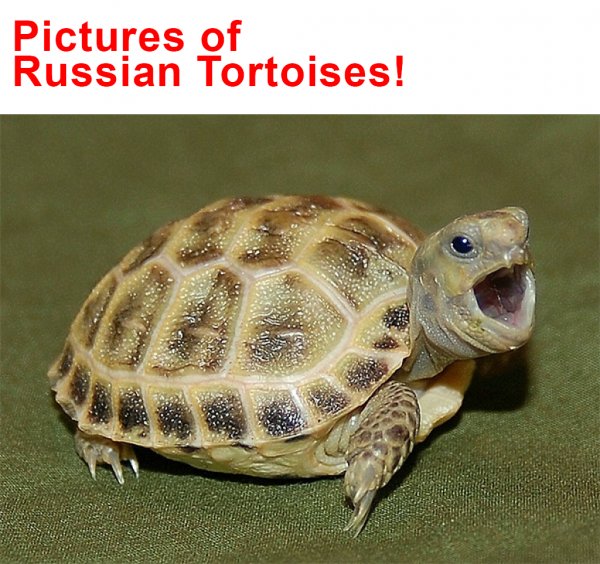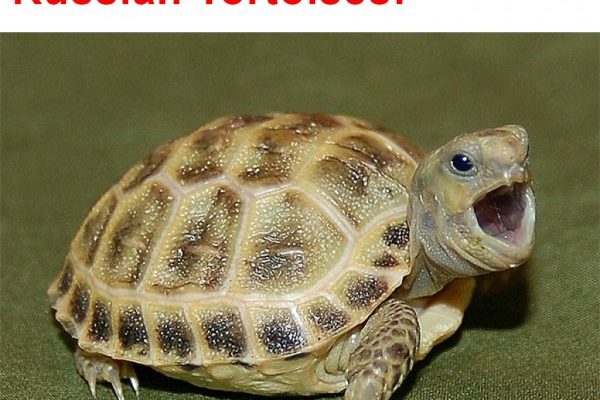
The Russian tortoise, scientifically known as *Testudo horsfieldii*, is a fascinating pet that attracts many reptile lovers. These tortoises hail from the dry, rocky habitats of Central Asia, and they have adapted perfectly to their environment. Picture them as little living tanks, slowly ambling around, munching on greens, and soaking up the sun. However, their size may surprise you if you’re considering one as a pet. Understanding how big they can get will help you plan for their future needs.
Average Size of a Russian Tortoise
So, how big does a Russian tortoise get? Generally, these tortoises grow to be around 8 to 10 inches long as adults. Picture that: about the size of a large grapefruit! It’s worth noting that while some individuals may reach up to a foot in length, this is less common.
When they’re hatchlings, they’re tiny—often just a couple of inches. It’s like holding a small peach in your hand! But as they grow, they’ll need more space. If you’re considering adding one to your family, understanding their growth rate will help you accommodate their needs properly.
A major factor that influences their size is genetics. Just like how some people are naturally taller than others, tortoises can vary in size based on their lineage. Additionally, their diet and habitat also play crucial roles. A well-fed, healthy tortoise in a spacious environment will thrive and reach its full potential size.
Growth Stages of Russian Tortoises
Russian tortoises go through a few growth stages, and each one is critical to their development. During their first year, they typically grow the fastest. In fact, they can gain about 2 to 3 inches in that time. Think of it like a puppy that grows rapidly before settling into their adult size.
As they progress into their adolescent years, their growth begins to slow down. By the time they reach 3 to 5 years old, they may be around 6 to 8 inches long. This is an exciting time for tortoise owners, as this stage is when they start to show their unique personalities. You’ll notice them being more curious and active in their environment, like kids exploring a new playground.
Finally, around 10 years of age, Russian tortoises reach their adult size. By then, you should have a well-adjusted tortoise that’s either basking in the sun or munching away on some tasty weeds. It’s crucial to ensure their enclosure is suitable for their adult size, both for their safety and comfort.
Factors Influencing Growth Size
Several factors influence how big a Russian tortoise will get. One of the most important is diet. A well-balanced diet of leafy greens, vegetables, and some calcium supplements is vital for healthy growth. Think of a tortoise’s diet like fuel for a car; the better the fuel, the better the performance.
Another key factor is environment. Russian tortoises need a spacious habitat to roam around. A cramped space can stunt their growth and even lead to health problems. Ideally, they should have an outdoor enclosure where they can bask in the sun and dig in the dirt. If kept indoors, ensure you provide enough floor space and enrichment to mimic their natural habitat.
Lastly, genetics plays a significant role. Some tortoises may naturally grow larger than others due to their breeding. While you can’t change genetics, understanding it helps set realistic expectations for size.
Comparing Sizes: Russian Tortoise vs. Other Tortoise Species
If you’re trying to decide if a Russian tortoise is the right fit for you, it’s helpful to compare their size with other common tortoise species. For example, the Sulcata tortoise can grow much larger—up to 30 inches! That’s more than three times the size of a Russian tortoise.
On the other side, the Greek tortoise shares a similar size range but tends to be a bit smaller, averaging around 6 to 8 inches. Each species has its own unique needs and personalities, so knowing their sizes will help you choose the best companion for your lifestyle.
Deciding on a tortoise isn’t just about size; it’s also about how much room you have at home and how much time you can dedicate to their care. Russian tortoises might be smaller, but they still need plenty of attention and proper care.
Keeping Your Russian Tortoise Healthy
Now that you know how big a Russian tortoise can get, let’s discuss how to help them maintain a healthy size. A balanced diet is key, featuring:
- Leafy greens (like collard greens or dandelion leaves)
- Vegetables (such as squash or bell peppers)
- Occasional fruits (but keep it limited!)
Hydration is also important. Ensure they have a shallow dish of water available at all times—you’d be surprised how often they’ll take a drink!
Regular vet check-ups can make a big difference too. These little guys can develop health issues if not monitored closely. So, if you notice any unusual behavior, such as lack of eating or lethargy, it’s best to consult a veterinarian.
The Importance of Space for Growth
Providing ample space is crucial for a Russian tortoise’s growth. While a small enclosure might be suitable for a baby tortoise, they will soon outgrow it. It’s like a teenager trying to fit into their childhood bedroom.
An outdoor setup is often ideal for adult Russian tortoises, as they enjoy burrowing and basking in the sun. Aim for at least a 4×8 foot area or larger, allowing them to explore and roam freely. If you’re keeping them indoors, consider using a large tortoise table or setting aside a room where they can safely wander around.
Don’t forget about enrichment! Adding things like hiding spots, rocks, and plants mimics their natural environment and encourages them to be active. This not only helps with their physical health but also keeps their minds stimulated.
Understanding how big a Russian tortoise can get is an important part of being a responsible pet owner. With an average size of 8 to 10 inches, these charming creatures require thoughtful care and an accommodating living space to thrive. Remember, they need proper diet, a spacious habitat, and plenty of love.
As you plan for your tortoise’s future, keep in mind that their size will influence their care needs. Whether you’re already a proud tortoise parent or considering adding one to your family, knowing what to expect can make the journey much more enjoyable. Happy tortoise keeping!

